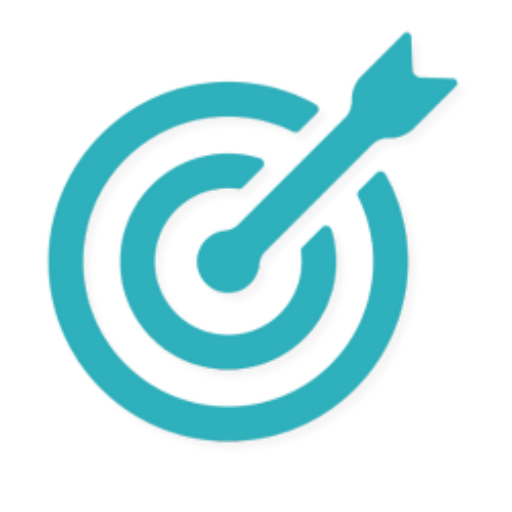Resume Achievement Formulas: Turn Your Responsibilities into Impressive Accomplishments
“Responsible for managing customer service team.”
Yawn. If that’s how your resume reads right now, we need to talk.
In today’s competitive job market, listing your day-to-day responsibilities is the equivalent of showing up to an interview in pajamas. It might technically cover the essentials, but it’s not making the impression you want.
Here’s the hard truth: hiring managers spend an average of just 6-8 seconds scanning your resume before deciding whether to keep reading or toss it aside. In that brief window, achievement-focused bullet points dramatically outperform basic responsibility statements.
Why? Because achievements tell the story of what you actually accomplished, not just what you were supposed to do. They showcase your value, not just your job description.
In this article, you’ll learn proven formulas to transform even the most mundane responsibilities into powerful achievements that grab attention, impress hiring managers, and help you pass the crucial 6-second resume test.
☑️ Key Takeaways
- Achievement-driven resumes get more attention—employers want to see results, not just responsibilities.
- Use formulas like “Accomplished X by doing Y” to clearly show the impact of your work.
- Quantify results whenever possible, using numbers, percentages, or time saved to add credibility.
- Tailor your achievements to each job, aligning with the specific skills and goals listed in the job description.
Why Achievements Trump Responsibilities Every Time
There’s a fundamental difference between responsibilities and achievements that many job seekers miss:
- Responsibilities describe what you were hired to do
- Achievements demonstrate how well you actually did it
When faced with two candidates with similar backgrounds, hiring managers will invariably choose the one who demonstrates concrete results. Why? Because past performance is the best predictor of future success.
Think about it from the employer’s perspective. If you’re hiring a sales representative, which candidate sounds more promising?
Candidate A: “Responsible for new client acquisition and territory development.”
Candidate B: “Generated $375,000 in new business within first year by developing targeted outreach strategy for previously neglected territories.”
Candidate B isn’t just telling you what they did—they’re showing you how effectively they did it and the specific value they brought to their employer.
This distinction matters even more in the age of applicant tracking systems (ATS). These resume-scanning programs are increasingly sophisticated at distinguishing between generic responsibility statements and specific achievements with measurable outcomes. To learn more about optimizing your resume for these systems, check out our guide on ATS resume hacks.
Still Using An Old Resume Template?
Hiring tools have changed — and most resumes just don’t cut it anymore. We just released a fresh set of ATS – and AI-proof resume templates designed for how hiring actually works in 2025 all for FREE.
The Basic Achievement Formula: Your Resume Game-Changer
Ready to transform your resume? Start with this proven formula:
Action Verb + Task + Measurable Result
This simple structure forces you to focus on outcomes rather than activities. Let’s break it down:
- Action Verb: Begin with a strong, specific verb that precisely describes what you did (avoid weak verbs like “helped” or “worked on”)
- Task: Clearly state what you did, for whom, and in what context
- Measurable Result: Quantify the outcome with numbers, percentages, dollar amounts, or time frames
Here’s how this works across different roles:
BEFORE (Customer Service): Responsible for handling customer complaints. AFTER: Resolved 95% of customer complaints within 24 hours, improving customer retention rate by 23%.
BEFORE (Marketing): In charge of social media accounts. AFTER: Grew Instagram following from 5,000 to 25,000 in six months through targeted content strategy, increasing website traffic by 34%.
BEFORE (Project Management): Managed product development projects. AFTER: Led cross-functional team of 12 to deliver $2M product development project under budget and two weeks ahead of schedule.
Interview Guys Tip: When you can’t find the exact numbers, use reasonable estimates with phrases like “approximately,” “more than,” or “averaging” to maintain credibility while still demonstrating impact.
And for an exhaustive list of powerful verbs and adjectives, see our 250+ Powerful Words to Describe Yourself guide.
Turn Weak Resume Bullets Into Interview-Winning Achievements
Most resume bullet points are generic and forgettable. This AI rewriter transforms your existing bullets into compelling, metric-driven statements that hiring managers actually want to read – without destroying your resume’s formatting.
Power Bullets
Loading AI resume rewriter…
Advanced Achievement Formulas for Greater Impact
Once you’ve mastered the basic formula, you can level up with these more sophisticated structures that tell a compelling story about your contributions:
Formula 1: Problem + Action + Result (PAR)
This formula is perfect for showcasing your problem-solving abilities:
- Problem: Identify a challenge or issue that existed
- Action: Describe what you specifically did to address it
- Result: Quantify the positive outcome
Example: “Identified critical bottleneck in production process causing 3-day shipping delays. Implemented new workflow system that reduced processing time by 62%, bringing average delivery time from 5 days to 1.5 days and improving customer satisfaction scores by 28%.”
Formula 2: Challenge + Action + Result + Impact (CARI)
This extended formula shows both immediate results and broader impact:
- Challenge: Describe the difficult situation or goal
- Action: Explain your specific approach
- Result: Provide measurable outcomes
- Impact: Connect your achievement to larger business objectives
Example: “Faced with declining engagement in company training programs (32% completion rate), redesigned curriculum using interactive modules and real-world simulations. Increased completion rate to 94% within one quarter, which contributed to 15% reduction in workplace safety incidents and $175K annual savings in insurance premiums.”
Formula 3: Situation + Task + Action + Result (STAR)
This comprehensive framework tells a complete story:
- Situation: Set the context
- Task: Define your specific responsibility
- Action: Detail the steps you took
- Result: Quantify the outcome
Example: “During market downturn when competitors were losing 15-20% of revenue, tasked with retaining key clients representing $3.5M in annual contracts. Developed customized retention program offering flexible payment terms and additional service benefits. Retained 98% of at-risk accounts while increasing average contract value by 7%.”
Interview Guys Tip: Achievements don’t always need to be about saving millions or increasing metrics by triple digits. Consistent improvements of 5-10% can be just as impressive, especially if sustained over time or achieved in challenging circumstances.
Industry-Specific Achievement Examples
Different industries value different types of achievements. Here are targeted examples to inspire your own resume bullets:
Sales/Marketing Achievements
- “Exceeded quarterly sales targets by average of 18% for 6 consecutive quarters, earning company’s Top Performer award twice”
- “Conceptualized and executed email campaign that generated 43% higher click-through rate than company average, resulting in $127K in attributable revenue”
Technical/IT Achievements
- “Optimized database query performance, reducing processing time by 78% and saving 15 hours of computing resources weekly”
- “Migrated legacy system to cloud infrastructure with zero downtime, reducing operational costs by $95K annually”
Management/Leadership Achievements
- “Improved team productivity by 32% through implementation of agile methodology and targeted training program”
- “Reduced department turnover from 27% to 8% through mentorship program and revised compensation structure”
Administrative/Support Achievements
- “Redesigned filing system that reduced document retrieval time by 75% and eliminated an average of 5 hours of administrative work weekly”
- “Negotiated with vendors to secure 15% average discount on office supplies, saving company approximately $12K annually”
Creative Field Achievements
- “Designed marketing materials that won industry award and increased brand recognition by 24% among target demographic”
- “Created content strategy that increased average time on site from 1:05 to 3:42 and lowered bounce rate by 35%”
Your achievements don’t just impress hiring managers—they also make your profile more compelling to your professional network. Learn more about how to optimize your resume for your network in our article on the network effect resume.
Troubleshooting Common Achievement Challenges
“But I don’t have any metrics!”
Even in roles without obvious numbers, you can quantify your impact:
- Volume: How many clients/customers/cases did you handle?
- Time: Did you make something faster or more efficient?
- Scope: How large was the project/team/budget you managed?
- Frequency: How often did you perform key functions?
“I’m entry-level with limited experience”
Focus on:
- Academic achievements with real-world applications
- Internship or volunteer contributions
- Projects where you demonstrated relevant skills
- Improvements to processes, even in part-time roles
“I’m changing careers and my achievements aren’t relevant”
Emphasize:
- Transferable skills with quantifiable results
- Leadership or team contributions that translate across industries
- Problem-solving achievements that show your adaptability
- Training, certifications, or projects that bridge the gap
“My work is truly hard to quantify”
Consider:
- Feedback metrics or performance reviews
- Comparison to peers or standards
- Consistency and reliability measurements
- Contributions to team or department goals
Interview Guys Tip: The best achievements often come from the tasks you’re most proud of—not necessarily what was in your job description. Think about times when you went above and beyond, solved problems others couldn’t, or made improvements nobody asked for but everyone appreciated.
Your Resume Transformation Starts Now
The difference between a forgettable resume and one that lands interviews often comes down to how you present your work history—as a list of duties or as a record of achievements.
By applying these formulas to transform responsibilities into achievements, you’ll not only create a more compelling resume but also prepare yourself for interviews where you can expand on these accomplishments with confidence.
Remember: employers aren’t hiring you for what you might do—they’re hiring you for what you’ve proven you can do. Make sure your resume shows them exactly that.
Ready to take your resume to the next level? Start by identifying your three most significant achievements and rewriting them using the formulas above. Then work through the rest of your experience, focusing on the results that best demonstrate your value to potential employers.
Want to make sure your new achievement-focused resume isn’t tripping over other common mistakes? Check out our article on resume red flags to ensure your application is flawless.
Still Using An Old Resume Template?
Hiring tools have changed — and most resumes just don’t cut it anymore. We just released a fresh set of ATS – and AI-proof resume templates designed for how hiring actually works in 2025 all for FREE.

BY THE INTERVIEW GUYS (JEFF GILLIS & MIKE SIMPSON)
Mike Simpson: The authoritative voice on job interviews and careers, providing practical advice to job seekers around the world for over 12 years.
Jeff Gillis: The technical expert behind The Interview Guys, developing innovative tools and conducting deep research on hiring trends and the job market as a whole.
